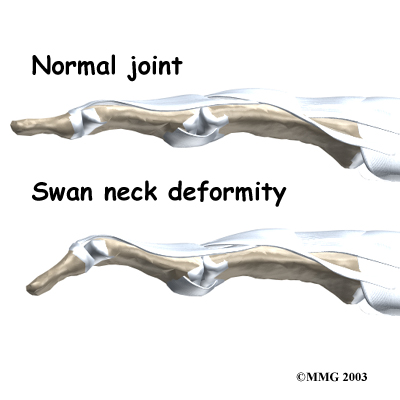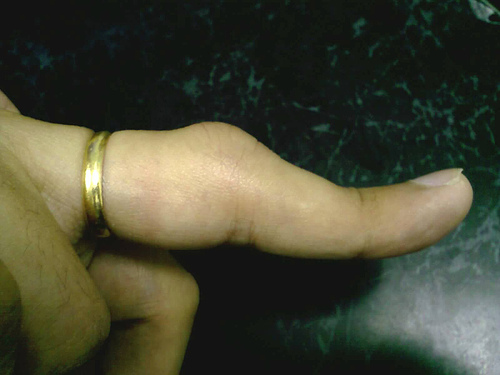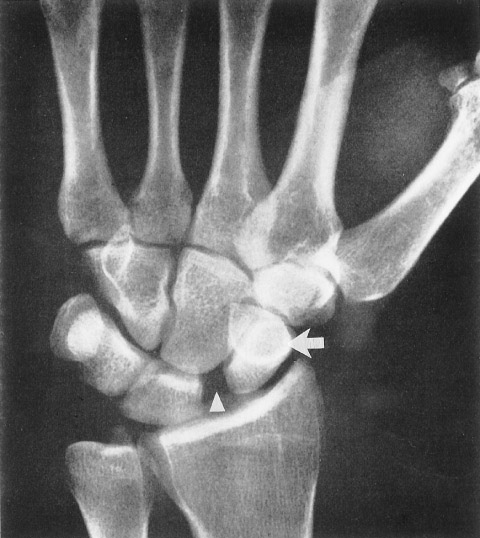Wrist and Hand Pathology
Osteoarthritis
Frequently involves the CMC joint of the thumb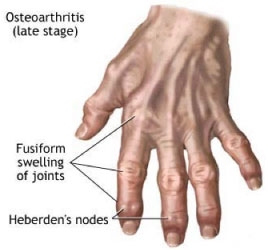
_553.jpg)
Rheumatoid Arthritis
-
Repeated inflammation and swelling in the digits can result in long term ligamentous laxity and tendinopathies. Finger deformities associated with RA include:
Hand deformities, regardless of underlying pathology, may require joint replacement if pain and functional ROM (either due to stiffness or instability) markedly interferes with functional use of the hand.
Idiopathic Hand Deformities
Dupuytren's Contracture
-
unknown etiology, however, incidence is associated with diabetes mellitus, genetics, smoking, alcohol use, and epilepsy
- more common in men
- progressive thickening and stiffness in palmar fascia of the hand:

Overuse injuries
- Carpal Tunnel Syndrome (CTS)
- compression to the median nerve can result in pain, sensory changes in the median nerve distribution, and hand weakness.
- nerve tension along the median nerve sheath can also produces symptoms associated with CTS.
- Review the instructional video on carpal tunnel syndrome for the take home points on this overuse injury
Video Approximately 3 minutes
Special tests for CTS
Phalen's Test (Video Approximately 2 minutes)
Tinel's Sign (Video Approximately 2 minutes)
Allen's Test (Video Approximately 2 minutes) - assesses circulation in the hand
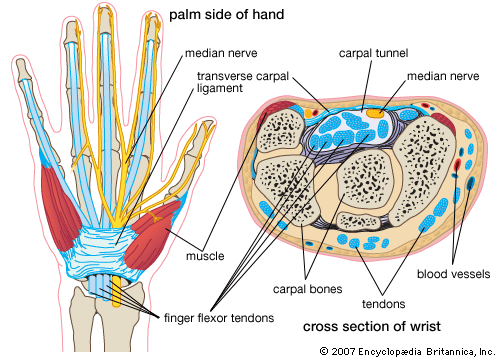
- Wrist sprain
- Most common ligaments involved in strain are:
- lunate-capitate ligament (dorsal)
- radiocarpal ligament (palmar)
- Onset is usually traumatic and involves compression with hyperextension
- Fall striking the dorsum of hand can result in end-range flexion compression
- DeQuervains Syndrome
- Trigger finger
- thickening of the flexor tendon sheath from repetitive microstrain
- may be caused by repetitive handiwork (knitting, beading, etc.) or unconscious fist clenching
- acute onset is associated with sustained, direct pressure to the flexor tendon sheath during sport (i.e., gripping baseball bat, racquet, golf club)
- digit locks into flexion, typically after sleep
- may be treated with cortisone injection to reduce localized inflammation in the affected tendon
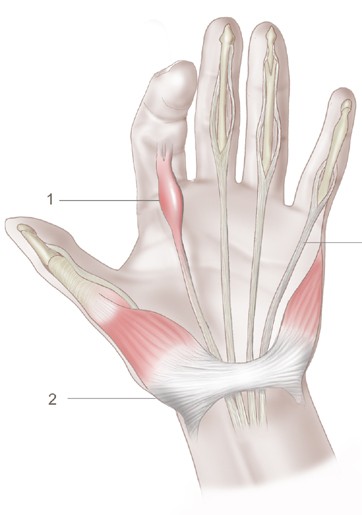
Bony Trauma
fractures or bony disruption to the wrist and hand are most commonly associated with falls. Careful screening for balance training or home safety should be considered for patients where falls are suspected or reported.

- Colles' fracture
- fracture of the distal radius and may or may not involve the ulna
- incidence is higher in women
- associated with falls
- most common diagnosis associated with wrist dysfunction
- Scaphoid and lunate dislocation: associated with fall on the outstretched hand with impact on the distal row of carpals
